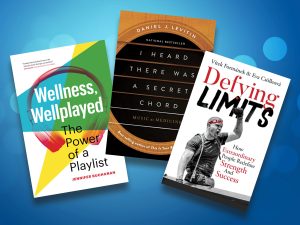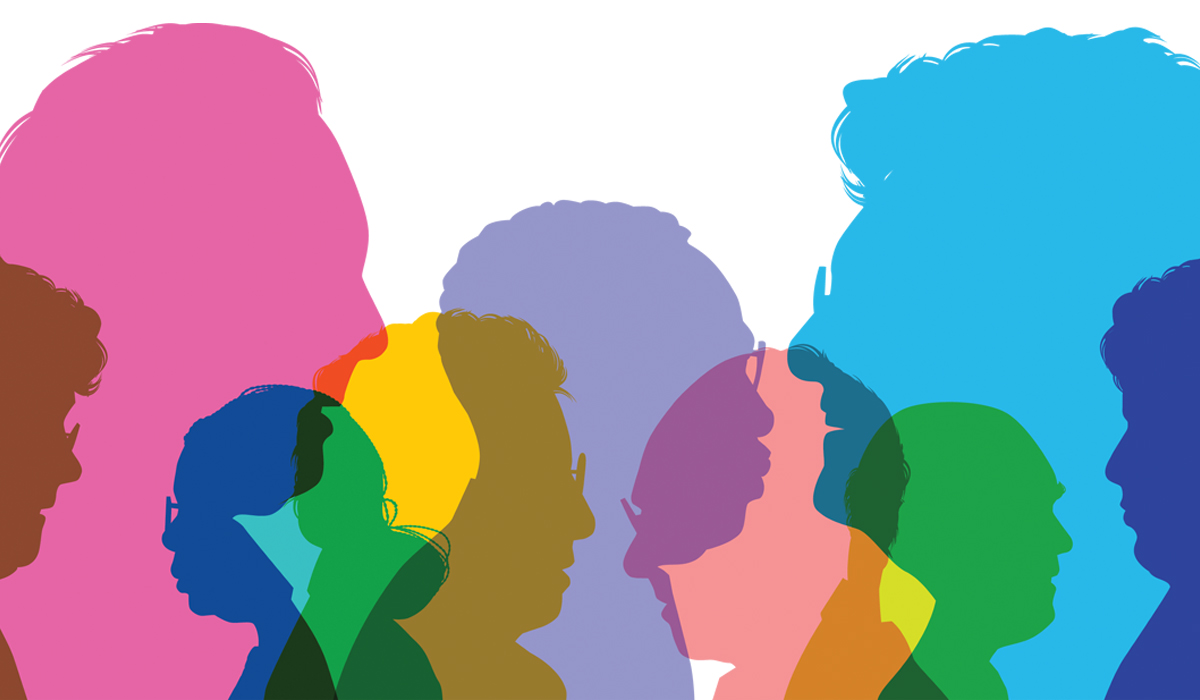When you picture drug abuse, Canadian seniors may not come to mind. But the over-prescription of painkillers has made them another face of the opioid epidemic.
By Kevin Spurgaitis
When Bert Mitchell remembers his motor-vehicle accident in February 2003, the 67-year-old can still see the two tractor-trailers jackknifed ahead of him on Highway 401, just north of Cobourg, Ont., where he lives. As Mitchell careened toward the pileup, there was a collision in his own mind—a split second of dissonance—between what he would attempt and what he couldn’t possibly avoid. He then stomped on the brake pedal as his Toyota Corolla was rear-ended by another tractor-trailer and driven into and under the stationary trucks just ahead. It took emergency responders several hours to free him from the wreckage—an extrication that he recalls only as scattered images witnessed amid brief moments of consciousness.
When Mitchell finally awoke from an induced coma two weeks later, he found himself in pain so excruciating that he thought he would pass out. The nurses were palpating his chest, clearing fluids from his collapsed lungs. “It’s like the old adage,” he says, still bemused. “I heard someone screaming and then realized it was me.” He was later told that he also had a concussion, 12 broken ribs, two spinal breaks and other internal injuries, as well as a compound fracture in his left arm.
Several weeks on a morphine drip at Toronto’s Sunnybrook Hospital led to several more weeks at Northumberland Hills Hospital in Cobourg. After finally being discharged, he remained bedridden for the better part of a year, completely dependent on a combination of the opioid pain-relief drugs OxyContin and Oxycocet.
“Taking these painkillers was very pleasant,” Mitchell admits. “The pain would return slowly, but I would take an OxyContin, and then five minutes later, everything was great again. It was a comforting feeling that would wash over my body with every heartbeat. I felt confident, secure—and happy.” OxyContin also made Mitchell drowsy. Although his midday snoozes were satisfying, he would fall asleep anywhere and at any time—even while behind the wheel of his car. After several near collisions, his wife, Sue, took over the bulk of their driving.
While recovering at home one day, Mitchell, who was forced to retire as a training technician because of his injuries, was shocked to read about the addictive nature of the drug that he had been taking for more than a year. He decided to stop cold turkey. “This was a mistake,” he says. “In just a few hours, I felt that something was very wrong.” As the drug’s effects started to wear off, the severe, intractable pain came back in waves until it was all-engulfing. He began to shake and panic. All he knew was that he had to have more OxyContin. It was “impossible to resist.”
While the prevailing picture of an opioid addict may be a street-involved person living in a place like Vancouver’s Downtown Eastside, a prescription from a family doctor can mark the beginning of a downward spiral into addiction. Mitchell is one of the growing number of North Americans—many elderly—who have overused pain medication in recent years, sometimes with tragic consequences. Opioids like OxyContin and fentanyl have long been prescribed for chronic conditions such as headaches and arthritis, and are highly recommended following surgery or at the end of life. But as opioid-related overdoses and deaths continue to increase, and as our aging population experiences aches and pains with ruthless regularity, physicians are being asked to pause before prescribing opioids to patients.
Unmistakably free
The seasons passed slowly, and Mitchell’s blissful haze wore thin. His accident-related pain now had merciful limits, but he often felt frustrated, even despairing. Determined to kick the addiction, he steeled himself for what was to come. “After four years, I finally went to my doctor and went through a program of gradual reduction of OxyContin and the eventual switch to fentanyl patches,” he says. “But after the first several months, I started becoming dependent on [fentanyl] and experienced insomnia, involuntary twitching and depression at the thought that I had lost control of my ability to function… I was also tired of feeling a sense of panic whenever
there was a chance that I couldn’t get my prescription refilled or if I thought that I had forgotten [the patches] while away from home.”
So after seven more years of gnawing uncertainty, Mitchell—who had no history of addiction prior to using OxyContin and fentanyl—decided to go off the opioids once and for all, without consulting his doctor. Only this time around, he inched forward, reducing his dosage by simply cutting the fentanyl patches in half, then in thirds and, finally, in quarters. After about two months, Mitchell says that he discontinued them altogether and felt completely, unmistakably “free.”
Dr. Hillel Finestone, the director of stroke rehabilitation research at Ottawa’s Élisabeth Bruyère Hospital and an associate professor of physical medicine and rehabilitation at the University of Ottawa, says that “People are finally realizing that there’s a high level of opioid prescriptions, with some physicians not being careful enough evaluating the drugs’ addictive potential.”
“What’s happened is that people are being prescribed opioids for more chronic, more persisting painful conditions, such as a nagging lower back, neck and leg after an automobile accident or a fall down the stairs,” he says. “And that sets up this cycle in which [a patient] always needs more.” Finestone, who is also a fellow of the American Academy of Physical Medicine and Rehabilitation and author of the 2009 book The Pain Detective: Every Ache Tells a Story, points out that most opioid users aren’t recreational consumers “sitting in the corner of their living rooms, in the darkened night. These are people dealing with their pain.”
Roughly one in five Canadians—and as many as three in five seniors—live with some kind of irrevocable suffering. According to the Canadian Centre on Substance Abuse (CCSA), nearly 15 percent of the general population and roughly 16 percent of seniors use pain relievers such as morphine, oxycodone (best known by the brand name OxyContin) and fentanyl (typically administered through an adhesive patch). In fact, Canada has become the world’s second-largest per capital consumer of opioids behind the United States. In 2015, the number of Canadian opioid prescriptions was 19 million, according to 2015 figures provided to the Globe and Mail by IMS Brogan, which monitors the health-care industry.
But opioids can also bring about drowsiness, perspiration, constipation, nausea, vomiting and a loss of appetite, the CCSA says. And higher doses can cause sleep apnea, mood changes and an overwhelming feeling of euphoria, as well as a significant decrease in one’s breathing rate, which can lead to unconsciousness and death. People who are physically dependent on opioids—addiction can happen in as little as a week—may also experience withdrawal symptoms in mere hours if they simply run out of medication or decide to quit abruptly. Think of it as a terrible flu. Insomnia and lowerback pain may kick in. Chills can race through the body. For a couple of days straight, there can be major diarrhea, vomiting or dry-heaving, and even more muscle aches. In other words, opioids may not relieve underlying pain as much as they numb the suffering associated with withdrawal.
Public health emergency
As a result, opioid users may take a daily dose higher than what’s recommended by their doctor; ingest them together with alcohol or other sedatives; and beg or steal opioids from friends or relatives. Some addicts obtain prescriptions from multiple physicians— a scheme called “double doctoring”—or resort to using street- or Internet-purchased drugs. The effect of opioids on Canada’s health-care system is no less adverse. Last April, BC even declared a public health emergency because of opioid-related deaths.
Across the provincial border in Alberta, 338 died due to opioid-related overdoses between January and September of last year. In Ontario, opioid overdoses are now the third leading cause of accidental death, killing two people in the province every day, according to data provided to CBC News by the Office of the Chief Coroner in October.
In 2015, one year after he finally got off fentanyl, Bert Mitchell’s appendix ruptured, forcing him to undergo emergency surgery. Once again, he spent a number of days in the hospital and was placed on a morphine pump for his pain management.
Upon discharge, Mitchell—already stupefied by painkillers—was advised by his surgeon to take opioids. He objected strenuously, though, informing his physician that “under no circumstances” would he ever take something like OxyContin again. “I was aware that I was addicted to OxyContin once and that I would be susceptible,” he says. “[My surgeon] said that he understood my trepidation and indicated that he would prescribe Percocet instead. But when I went to the pharmacy to fill the prescription, my pharmacist was visibly shocked.
He knew of my bout with OxyContin and fentanyl because he filled my prescriptions during my recovery. He told me that Percocet was the same thing as OxyContin.”
Percocet contains far less oxycodone and is not as long lasting. Still, Mitchell’s pharmacist felt that the prescription was inappropriate for him and called Mitchell’s surgeon to express his concern. “Did my doctor not even realize?” Mitchell asks. “This would seem to indicate that some doctors who are involved with pain management aren’t aware of what—and to whom—they are prescribing.”
Derived from poppies, opium has long been the elixir for pain. The ancient Sumerians are believed to have been the first to discover the flower’s euphoric properties around 3,400 BC; they called it “the joy plant.” In the early 1800s, German pharmacist apprentice Friedrich Sertürner separated the sleep-inducing compound from the poppy plant and named it morphine, after the Greek god of dreams.
In 1874, British chemist Alder Wright synthesized the drug that would come to be known as heroin. And by the turn of the 20th century, physicians didn’t prescribe much other than opiates for pain. “Thus, addiction exploded —to a drug that people believed was safe because doctors said so,” Sam Quinones writes in his 2015 book Dreamland: The True Tale of America’s Opiate Epidemic. “By 1996 American physicians were tenderized to accepting opiates for chronic pain. Undertreated pain was an epidemic and physicians now had the duty, the calling, to relieve it using the new tools and drugs the pharmaceutical companies were inventing.” During that same period, “pain crusaders” even heralded Purdue Pharma’s new synthetic drug, OxyContin, as “the Holy Grail,” Quinones points out.
This “happy façade covered a disturbing reality” in the United States, Quinones writes: addiction has devastated the Rust and Bible belts, as well as other parts of the country. More than 15,000 Americans died of prescription opioid overdoses in 2015, according to the Centers for Disease Control and Prevention. That’s more than the total number of deaths caused by heroin or cocaine overdoses.
But there is a misconception surrounding who is most at risk of abusing opioids, according to Andrew Kolodny, the executive director of Physicians for Responsible Opioid Prescribing in the United States. In August 2015, Kolodny told Al Jazeera America that the rate of opioid abuse may be even higher among older Americans who receive prescriptions. “When you look at the groups that have had the greatest increase in problems associated with prescription opioids—for example, visits to hospital emergency rooms because of opioid misuse—it’s Americans over 65,” he said.
CDC data published in 2015 revealed that over 3.6 million Americans aged 60 and older used prescription opioids in a 30-day period. Between 2014 and 2015, the rate of Americans over the age of 65 who died from synthetic opioid overdoses increased by 25 percent. Still, their opioid addiction remains a hidden epidemic, Kolodny told Al Jazeera. That’s because family members, friends and caretakers frequently miss the telltale signs of addiction. When an older person overdoses on prescription opioids before going to sleep, the cause of death is far too often listed as “natural.”
Never a mainstream option
Pain experts in both Canada and the United States say that there’s still a place for opioids in health care, such as after a major surgery. And the risk of long-term opioid use in surgical patients is extremely low, according to Dr. Hance Clarke, the medical director of Toronto General Hospital’s pain research unit. Clarke led a study, published in the journal JAMA Surgery last August, about the use of post-surgery painkillers over one year. The 39,140 participants were 66 and older, had not taken opioids in at least a year and underwent major surgery between 2003 and 2010. The study suggested that opioid abuse occurred in less than half of one percent of the 20,744 seniors who received opioids after their surgery. The rest only briefly used drugs like OxyContin or Percocet.
“If you’re an elderly patient and you come into the hospital [for surgery] and have no chronic pain issue, the fact that you’re going to be on opioids short-term is probably not going to be an issue for you,” says Clarke.
Finestone agrees. Opioids should never be the “mainstream treatment of pain,” he says. However, often “family physicians have few other treatment options for patients.”
He suggests non-pharmacological therapies, including physiotherapy, kinesiology and psychological counselling, as well as holistic practices like mindfulness. But these may not be covered by provincial health insurance and assistance plans. So the major impediment to receiving this “total basket of care,” according to Finestone, is “the financial hardship that’s imposed on individuals if they pay for all of these services, which can cost tens of thousands of dollars over time.”
He says that policy-makers and health-care practitioners must also come together to turn the tide of opioid over-prescription while keeping pain levels under control. This means a team approach similar to that established for cancer, stroke and heart patients, who are treated not only by physicians and nurses, but also by social workers, dietitians and physiotherapists. There’s virtue in this multidisciplinary care, he says. Both money and lives are saved.
But Finestone worries about what will happen to patients if they’re forced to suddenly withdraw from their painkillers. “What do you do when your family doctor finally wants to stop prescribing opioids, but you still need them because of the powerful physiological and psychological dependency?” he asks. “You can’t just be told, ‘Tough luck.’” In the absence of affordable opioid-substitution treatment and cognitive behavioural therapy, Finestone says pain sufferers may go straight from the pharmacy to the black market for their medication, instead of weaning off it altogether.
Today, Mitchell and his wife spend most of their time between their sun-drenched condo in Bonita Springs, Fla., and their three-bedroom bungalow in Cobourg. He plays 18 holes of golf whenever he feels well enough and remains active as a vice-president in the Retired Workers’ Chapter of the province’s Power Workers’ Union. Mitchell’s friends and family still ask him, “How are you feeling?” They know he still suffers from post-accident pain: the arthritic soreness and the scar tissue-related stiffness. But he says that he’d rather be this way than addicted to “this [opioid] crap.” In fact, he barely uses any medications, other than the occasional Advil or Naproxen. He opts instead for massages and “regular dips” in a hot tub.
“Yes, I’m feeling much better today,” Mitchell says, rather assuredly. “I finally have my life back.”
Kevin Spurgaitis is a Toronto-based writer
Originally printed in The United Church Observer.












